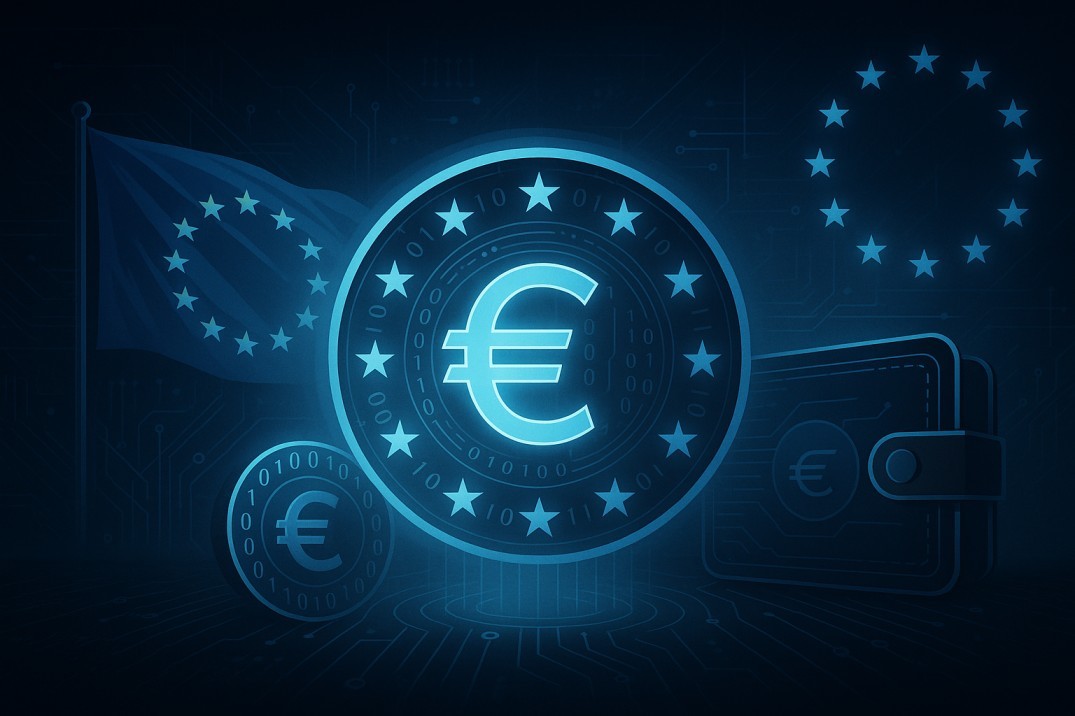TL;DR
-
EU finance ministers have agreed on the process for setting holding limits on the digital euro.
-
This moves the bloc closer to a formal launch of its central bank digital currency (CBDC).
-
Actual limit amounts will be decided later, but privacy and bank stability remain key issues.
The European Union is one step closer to rolling out a digital euro. Finance ministers from across the bloc agreed on Friday on a framework to set limits on how much digital euro an individual can hold.
The decision was made during the Eurogroup press conference following the Economic and Financial Affairs Council (ECOFIN) meeting in Copenhagen. Officials described the agreement as a breakthrough in the "ceiling for holding limits and ultimately the issuance process itself for the digital euro."
Importantly, this agreement doesn't set the actual numbers just yet. An official clarified during the press conference that the talks were focused on procedures for establishing limits, rather than deciding on the caps themselves.
Why the Limits Matter
Holding limits are a crucial part of the design for a central bank digital currency (CBDC). Without them, people could potentially move massive sums out of commercial banks into digital euros, disrupting the financial system.
The European Central Bank (ECB) has been considering these limits for years, and they remain a point of debate between the ECB and national central banks. The new agreement provides a clear process for deciding where to set those limits, giving policymakers a roadmap for moving forward.
Balancing Innovation and Risk
This move comes as the EU continues to double down on its digital euro project, even as global attention shifts toward stablecoins. Earlier this month, ECB board member Piero Cipollone argued that the system will ensure "all Europeans can pay at all times with a free, universally accepted digital means of payment, even in case of major disruptions."
He also stressed that privacy would remain a priority: "The bank will not know anything about the payer and the payee." Offline payments, he added, will work "as good as cash" when it comes to preserving privacy.
Stablecoin Pressure

The push for a digital euro also reflects geopolitical and regulatory pressure. Stablecoins - particularly those tied to the U.S. dollar - have seen rapid growth. ECB adviser Jürgen Schaaf recently suggested deploying the digital euro as a strategic counterweight to the dominance of dollar-based stablecoins.
Fabio Panetta, Governor of the Bank of Italy and former ECB official, echoed that sentiment earlier this year, warning that "the evolution of crypto-assets cannot be controlled only through rules and restrictions." He described the digital euro as a necessary tool to address risks posed by the rising adoption of cryptocurrencies and stablecoins.
What’s Next
- Finance ministers will move to define actual numerical limits in upcoming meetings.
- Legal texts will need to be drafted and approved by the European Parliament and EU institutions.
- Public and stakeholder engagement will increase, especially around privacy, offline use, and how the digital euro will handle disruptions.
- Monitoring how stablecoin regulation globally might influence the digital euro’s final shape.
Final Thought
The EU's digital euro project has been years in the making, but the agreement on holding-limit procedures is a significant milestone. It signals that the political will is there to move from theory to implementation.
The challenge ahead will be finding the right balance - setting limits high enough to make the digital euro useful for citizens but low enough to protect financial stability. The final numbers will be critical in determining whether Europeans adopt the digital euro or continue relying on private payment solutions and stablecoins.











